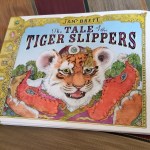Force of Nature Book Review
Jane Harper scores another win with Force of Nature. This second novel featuring Federal Agent Aaron Falk follows in the footsteps of The Dry. Plot twists keep the reader in suspense throughout. Best of all, Harper’s characters are so real and like-able, this reader was dismayed when the suspicion focused on one of the individual’s I most connected with among the potential culprits.
Remote Australia
The setting for Force of Nature is the Giralang Ranges, a remote area of Australia. Ten individuals from a company that Falk is investigating are on a corporate retreat. The group is divided evenly by gender and each team is sent on a different route. The purpose is to create a bond. But the women’s group is late to the rendezvous. Finally, four of the five women return, battered by the force of nature. Snake bit, concussed, bruised and stories that don’t quite add up equate a less than optimal outcome for the missing woman.
Of course, Falk and his partner Carmen Cooper rush to the scene when their inside informant is the one who turns up lost. The remoteness of the area along with the topography and vegetation of this fictional National Park make finding the missing woman difficult. Furthermore, the duo can’t be certain how their investigation of the company is involved.
Force of Nature
Jane Harper weaves a wonderful plot. Her pivoting between action and reflection is well done. Also, her sub-story of teen bullying and sexting adds just the right amount of uncertainty. Both kinship and friendship undergo excruciating stresses during this team building exercise when the women face the force of nature.
If you have not read any of Harper’s novels, I urge you to look for them. The writing is outstanding. I have yet to read her latest, but I am sure it will be every bit as suspenseful as Force of Nature. Jane Harper is quickly becoming one of my favorite authors. I plan to read her next, The Lost Man, as soon as I can get my hands on a copy.
 Invisible by Lorena McCourtney was released in 2004 but is a newly discovered series for me. And I enjoyed this murder mystery featuring retiree Ivy Malone. The novel falls into the category of entertaining vs. suspenseful. My first GOL (giggle out loud) occurred on page 13. A good omen in my opinion.
Invisible by Lorena McCourtney was released in 2004 but is a newly discovered series for me. And I enjoyed this murder mystery featuring retiree Ivy Malone. The novel falls into the category of entertaining vs. suspenseful. My first GOL (giggle out loud) occurred on page 13. A good omen in my opinion. Recently, I traveled a few hours to a city of 100,000. The purpose of the trip was last minute Christmas shopping. The first stop was a Barnes and Noble where I expected to spend at least an hour. I ended up staying all morning.
Recently, I traveled a few hours to a city of 100,000. The purpose of the trip was last minute Christmas shopping. The first stop was a Barnes and Noble where I expected to spend at least an hour. I ended up staying all morning. The Gifted School by Bruce Holsinger caught my eye. The inside jacket narrative piqued my interest. Finally, the author’s writing style kept me glued to the pages. I finished this 400 plus page book in one sitting.
The Gifted School by Bruce Holsinger caught my eye. The inside jacket narrative piqued my interest. Finally, the author’s writing style kept me glued to the pages. I finished this 400 plus page book in one sitting.
 This weekend I will spend some time with the youngest member of the family. So I have picked out a handful of board books that I think will entertain. Youngsters can enjoy books from a very young age and board books are perfect for chubby hands as well as drooling mouths.
This weekend I will spend some time with the youngest member of the family. So I have picked out a handful of board books that I think will entertain. Youngsters can enjoy books from a very young age and board books are perfect for chubby hands as well as drooling mouths.



